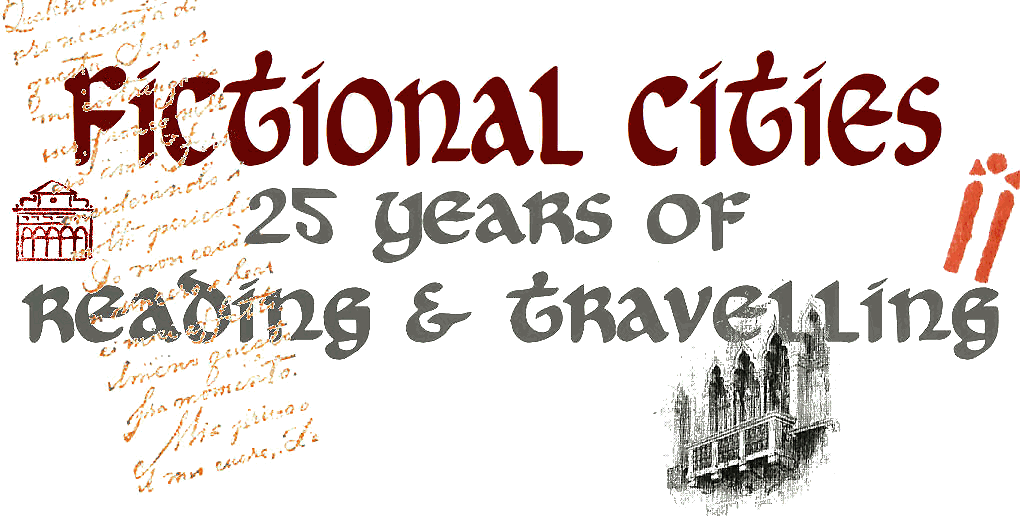|
Day
1: Wednesday 12 June
A new phenomenon at Heathrow, first experienced
last trip, is the long queue for the
gates where you scan your boarding pass to get you through to the queue
for security, which itself is now
not so long. Anyway, it was in the long pre-queue that I bumped into old
trip chums David and Jenny, and it was at their suggestion, as we had
time, that we exchanged the traditional Pret
breakfast for a sit down in the Giraffe upstairs, where I had the apple
and cinnamon pancakes. At the gate we met our leaders Paula and
Geoff and sundry other rogues
from previous - 24 participants in all, not a small group for sure.
This was to be P&G's last outing as trip guides, as they are retiring from
such things, and so was an historical event not to be missed.
The flight to Rome Fiumicino went
to schedule but we waited at the baggage carousel for flipping ages, the
three hour coach trip
to Città di
Castello
was at least that long and so, upon arrival at the Hotel Tiferno we had
but 20 minutes
to unpack before our evening meal at 8.30 at L’Accademia Hosteria. But the
meal-in-itself platter of mixed starters was fine, even if the veggie
risotto was a bit bland, and the group seems pretty harmonious.
Day
2: Thursday 13 June
Breakfast report - blood orange juice not bad,
croissants not pre-filled, but pre-sugared, cereal comes with various jars
of dried-fruit embellishments, and there's
three pretty standard cakes
to slice. For our first day we did the standard small
towns on the Piero itinerary. We spent the morning in
Sansepolcro. Piero della Francesco was born
here and it was his base for much of his
life. We walked past his house to get to the
Civic Museum, originally a renaissance
Misericordia hospital, which contains Piero’s
Madonna della Misericordia polyptych, and the
justly-famous fresco of The
Resurrection
(see right).
We spent much time with
both.
The
Duomo was
next,
to admire an altarpiece by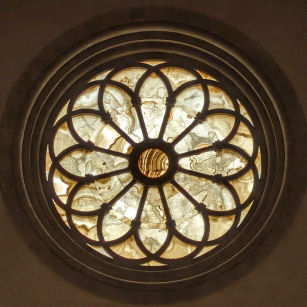 Niccolò di Segna,
from Siena, which
Paula
convincingly argued had influenced Piero's
Misericordia
altarpiece. I also admired a frescoed
Crucifixion
altarpiece niche, the work of Bartolomeo del Gatta, who sounds like my
kinda guy.
Niccolò di Segna,
from Siena, which
Paula
convincingly argued had influenced Piero's
Misericordia
altarpiece. I also admired a frescoed
Crucifixion
altarpiece niche, the work of Bartolomeo del Gatta, who sounds like my
kinda guy.
The group lunch at the Osteria Giardino di
Piero was al fresco and a good four courses. Lastly to
Monterchi Piero’s Madonna del Parto fresco,
now hung behind glass in a
small white box in an old primary school. Which
setting almost manages to suck the spiritual joy out of it, but the
darkness that the room is now plunged into helps
to lessen this.
Then back to our hotel, with
the evening free, for those so inclined to
collapse into an anti-social heap, still stuffed from lunch. I went for a
stroll later in the evening, got the hang of Città di Castello a bit,
found lots of churches, including the Duomo (see right)
and one sociable cat. Lots of children's sport going on in the piazzas.
One of the city's less admirable traits is the need to have a sound system
playing banging, or at least throbby, music outside many restaurants and
bars, including, unfortunately, the one in the alley outside my window.
Earplugs were needed to sleep.
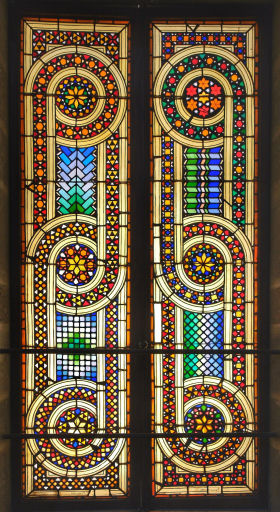
Day
3: Friday 14 June
This morning I asked for a
new room, being twice-shy after The Bologna Experience. I'll have a new
one when we come back this afternoon, but have to leave my stuff suitable
for easy transfer by the room staff.
To Arezzo. On arrival, we made for Santa Maria della Pieve to quickly
admire the excellent altarpiece by Pietro Lorenzetti, which returned here
in November 2020 after six years of restoration. Then to the Basilica of
San Francesco, for our first visit to admire Piero’s famous fresco cycle
devoted to The Legend of the True Cross. Like last time I was more
drawn to the many good works in fresco here by Spinello Aretino.
Afterwards was lunch, and so we made for the Piazza Grande where we ate at
the Ristorante Lancia D’Or under Vasari’s Loggia
In the afternoon we visited the Duomo, which has a single, admittedly
sweet, fresco panel of Mary Magdalen by Piero. The Duomo itself looks like
needing further exploring. Then to the Casa Vasari, the house where Vasari
lived. Unusually some of his ceiling paintings weren't bad. A quick look
at Vasari's tomb in the Badia, before a second session with the True Cross
frescoes, which I bailed on and spent exploring the delights of the church
at large. Which, I happily discovered, are many. The temptation is
becoming strong to make Arezzo my new page on The
Churches of Florence.
More temptation was provided
by admiring the pretty, asymetrical small church of San Domenico (see
below right) which, I later found out, contains a Cimabue Crucifix.
My new room faces a road, which features cars, but
irregularly and in one direction, but also the apse of the church
opposite, San Francesco,
so my room is not overlooked by windows, except the
stained-glass sort. Or at least the blocked-in windows where
stained glass should be.
Day
4: Saturday 15 June
Today we began with a half
day spent in Città di Castello. Firstly San Francesco
over the road, which has copies of two famous altarpieces which it once
owned, and a big bad Vasari. Well not bad, I suppose, but not very good.
Then to the Pinacoteca for more Raphael and Perugino action,
amongst some other stuff which was nice, but mostly 'studio of'. Into San
Domenico to finish, to see two original altarpiece
frames which have long been without their masterpieces. It was that kinda
morning. San Dom is also the final resting place of Santa
Margherita da Città di Castello.
The group broke for lunch, and I headed for the
cemetery. It was not too far out, was mostly
modern stacked filing marble cabinets,
but with one old
central cloister with a decorated chapel, some impressive wall monuments
(including a frescoed one for the confraternity of the above-mentioned
Santa Margherita) and some
very fine topiary. On my way back, by which time it was nearly 3.00,
I found a coop supermarket and picked up a focaccia tricolore, some
tarollini traditionale, and a bottle of peach iced tea.
Tonight was 'dinner not included' but an evening drink was
suggested by Geoff, to be followed by a pay-your-own-way
meal. Almost the whole group turned up, chaos ensued, and I wished I'd
sloped of f
for a pizza. I was told that there would be pizza, but it was yet
more aubergine and pasta, with mushroom. The desert was a source of hope,
being a blancmange thing flavoured with lemon and cinnamon and topped with
almonds. It tasted like a urinal cake. f
for a pizza. I was told that there would be pizza, but it was yet
more aubergine and pasta, with mushroom. The desert was a source of hope,
being a blancmange thing flavoured with lemon and cinnamon and topped with
almonds. It tasted like a urinal cake.
Day 5: Sunday 16 June
Today
was our last proper day,
spent in
Urbino. We started at 9.00,
our
coach journey into Le Marche taking
about an hour and a half, taken up with Paula telling
us all about Federico da Montefeltro - always a good story. After a
coffee break we got stuck into the Ducal Palace,
which was not too busy. The National Gallery of
the Marches is in the palace too and contains
much of interest, including Piero’s famous
puzzling Flagellation, his Senigallia Madonna, and
The View an Ideal City that has often
been wrongly attributed to him.
The latter was also the original top of the page image
for this very website. Works by Justus of Ghent and Raphael were also
appreciated, as was the famous and fine cortile and
Federico's spectacular little studiolo with its spiffy intarsia
work.
After an independent lunch, which
was blissfully a padina, not more flipping pasta
and/or aubergine, and my first gelato (yoghurt
with honey and amarena), we had a good long visit
to the Oratory with the wonderful
frescoes by the Salimbeni brothers,
but didn't go to the weird little one
up the way
with an altar like a grotto.
Our final group dinner
was at the Ristorante Bianconiglio. Asparagus
pasta parcels, aubergine bits in baked smoked cheese and profiteroles.
Day 6: Monday 17 June
We left at a positively slovenly 10.30, but today was
planned to include no art. It took us abut two hours to reach our early
lunch in the town of Faenza at the Ristorante Zingaro. A short walk
allowed us to take in the town square and quaff some coffee. After some
optional ceramic shopping we headed to Bologna Airport where queues there
were not, and our flight's departure
was delayed by little more than half an hour. It was a BA flight,
but operated by Air Serbia, in a plain white aeroplane. All the
announcements were the standard BA spiel, but delivered in interesting
accents. I was home by midnight.
This was a trip dominated by three-course lunches - three in five days -
which tend to punch three-hour holes in the middle of the day, which means
less art, which is not my preference. My previous trip, to
The South Tyrol, had been one of the best, so balance has
been achieved I suppose. |
|


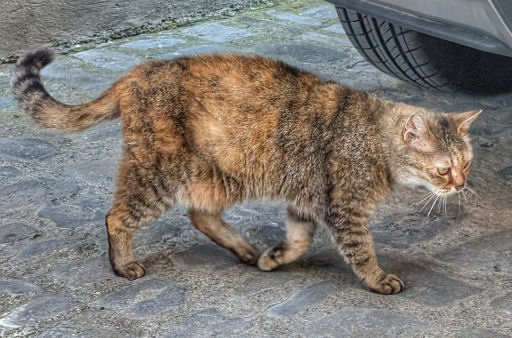
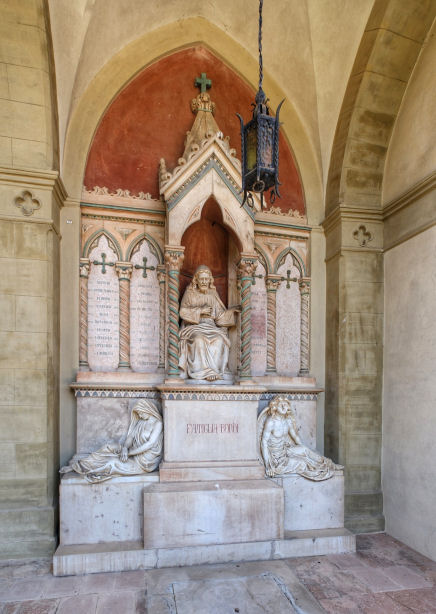
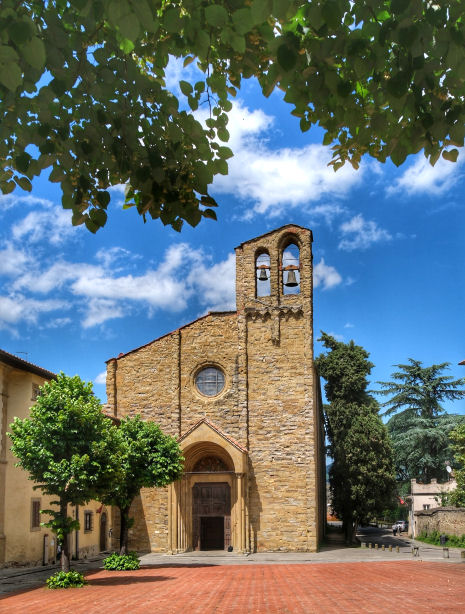 |
